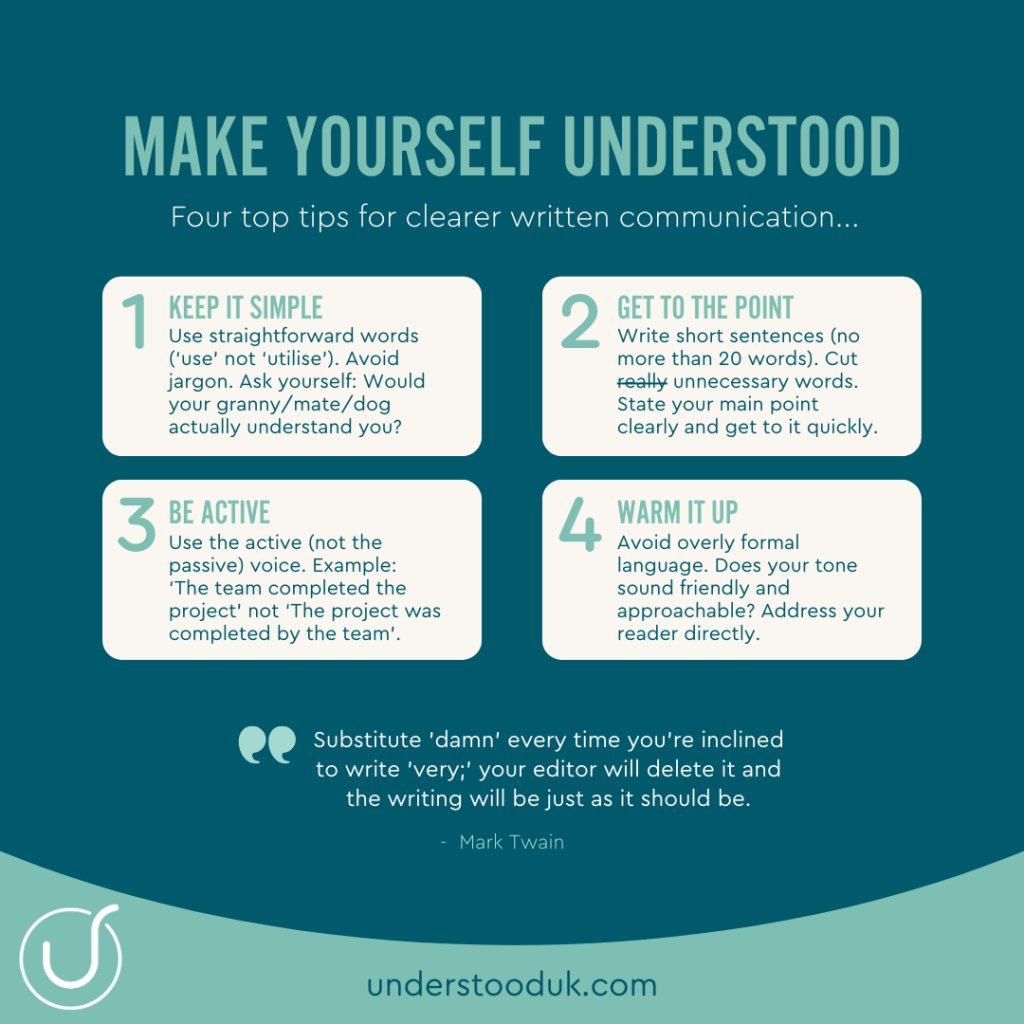
Make yourself understood: Four top tips for clearer written communication
By Carolyn Quainton in Behaviour, Communication
“Substitute ‘damn’ every time you’re inclined to write ‘very’; your editor will delete it and the writing will be just as it should be.”
– Mark Twain
In today’s always-on world, we’re flooded with information. That means clear, effective communication isn’t just nice to have – it’s essential. Whether you’re firing off a quick email, writing up a report, or creating training content, how clearly you express your message can make all the difference.
At Understood, we believe good communication underpins everything we do. Here are four practical tips to help you refine your writing and ensure your message is effective.

1. Keep It Simple
Simple writing is powerful writing. Ditch complicated words in favour of everyday language – say “use” instead of “utilise”, or “help” instead of “facilitate”. If you wouldn’t use a word in a conversation with a friend, it probably doesn’t belong in your writing.
You don’t need long words or jargon to sound smart. In fact, the more accessible your language, the more people will understand (and remember!) what you’re saying.
2. Get to the Point
Simple writing is powerful writing. Ditch complicated words in favour of everyday language – say “use” instead of “utilise”, or “help” instead of “facilitate”. If you wouldn’t use a word in a conversation with a friend, it probably doesn’t belong in your writing.
You don’t need long words or jargon to sound smart. In fact, the more accessible your language, the more people will understand (and remember!) what you’re saying.
3. Use the active voice
Active voice brings clarity and energy to your writing. Instead of saying, “The policy was reviewed by the team,” try, “The team reviewed the policy.” It’s cleaner, shorter, and easier to follow.
The active voice helps readers quickly grasp who’s doing what. That makes your writing feel more direct, more confident, and far more engaging.
4. Be human
Nobody wants to read something that sounds like a robot wrote it. A friendly, conversational tone helps people connect with your message. Write like you’re talking to someone, not like you’re drafting a legal document.
That doesn’t mean you need to be overly casual, just be warm, clear and human. Think about how you’d explain your message out loud, then write it down in the same tone.
Ready to make yourself understood?
Clear writing does more than get your message across. It builds trust, keeps people engaged, and drives action. By simplifying your language, cutting the fluff, using active voice, and striking a warm tone, you’ll create content that’s not just read, but remembered.
At Understood, we design all our training with clarity and accessibility in mind, helping organisations communicate in ways that truly resonate and spark change.
Want more tips on writing that connects?
Talk to us, explore our website, read our blog, and follow us on LinkedIn to learn more and discover ways to grow a more successful business.


